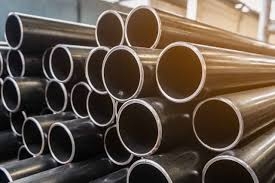When it comes to construction, steel bars play a pivotal role in ensuring the strength and stability of structures. Understanding steel bar sizes in mm (millimeters) is crucial for anyone involved in construction, from architects and engineers to contractors and DIY enthusiasts. This guide will take you through the basics of steel bar sizes, their significance, and how to choose the right sizes for your projects.
In this guide, we'll explore the different sizes of steel bars, their applications, and why choosing the correct size is vital for the integrity of your construction project. Whether you're a beginner or looking to refresh your knowledge, this comprehensive guide will help you understand the nuances of steel bar sizes in mm.
Understanding Steel Bar Sizes in mm
Steel bars come in various sizes, each serving different purposes in construction. The size of a steel bar is defined by its diameter, measured in millimeters. Common sizes include 6mm, 8mm, 10mm, 12mm, 16mm, 20mm, 25mm, and 32mm. Each size has specific applications based on the structural requirements.
1. 6mm to 10mm Bars
-
Application: These smaller diameter bars are typically used for lightweight structures, such as floor slabs, pavements, and small foundations.
-
Significance: These bars provide flexibility and ease of handling, making them suitable for intricate and less load-bearing structures.
2. 12mm to 16mm Bars
-
Application: Medium-sized bars are used in residential buildings, columns, beams, and walls. They provide moderate tensile strength and support for everyday structures.
-
Significance: These bars strike a balance between flexibility and strength, making them ideal for most residential construction projects.
3. 20mm to 25mm Bars
-
Application: Larger bars are used in commercial buildings, bridges, and heavy-duty structures. They provide significant tensile strength and are crucial for high-stress areas.
-
Significance: These bars ensure the structural integrity of large buildings and infrastructures, capable of handling substantial loads and stresses.
4. 32mm Bars and Above
-
Application: The largest diameter bars are used in mega structures, such as high-rise buildings, dams, and industrial facilities.
-
Significance: These bars offer maximum tensile strength, essential for supporting extremely heavy loads and ensuring the stability of massive structures.
Why Steel Bar Sizes in mm Matter
Choosing the right steel bar size is crucial for several reasons:
1. Structural Integrity
The primary role of steel bars is to reinforce concrete and provide tensile strength. Using the correct size ensures that the structure can withstand various stresses, including weight, wind, and seismic activity. Undersized bars may fail under load, leading to structural failures.
2. Load-Bearing Capacity
Different construction elements have varying load-bearing requirements. For instance, the load on a residential floor slab is significantly less than that on a bridge. Selecting the appropriate steel bar size ensures that each element of the structure can handle the specific loads it will encounter.
3. Safety and Durability
Safety is paramount in construction. Using the correct steel bar size enhances the durability and lifespan of the structure. It also ensures compliance with building codes and standards, which are designed to protect occupants and the public.
How to Choose the Right Steel Bar Sizes
Selecting the right steel bar sizes for your project involves considering several factors:
1. Project Type
The type of construction project dictates the required steel bar sizes. Residential buildings typically use smaller to medium-sized bars, while commercial and industrial projects require larger diameters for added strength.
2. Load Requirements
Evaluate the expected loads on different parts of the structure. This includes the weight of the building materials, occupants, furniture, and dynamic loads like wind and earthquakes. Consulting structural engineers is essential to determine the correct sizes.
3. Building Codes and Standards
Adhere to local building codes and standards, which specify the minimum requirements for steel bar sizes in various applications. Compliance ensures safety and legal adherence.
4. Availability and Cost
Consider the availability and cost of different steel bar sizes. While it's crucial to meet structural requirements, budget constraints may also play a role in selecting the appropriate sizes. However, never compromise on safety for cost savings.
Common Misconceptions About Steel Bar Sizes
There are several misconceptions regarding steel bar sizes that need to be addressed:
1. Bigger is Always Better
While larger bars provide more strength, they are not always necessary for every application. Using oversized bars can lead to unnecessary costs and complexities in construction.
2. All Bars are Created Equal
The quality of steel bars varies based on the manufacturing process and materials used. Always choose bars from reputable suppliers who adhere to industry standards.
3. One Size Fits All
Different construction elements have unique requirements. Tailoring the steel bar sizes to each specific need ensures optimal performance and safety.
Understanding steel bar sizes in mm and their significance is fundamental for anyone involved in construction. These bars are the backbone of reinforced concrete structures, providing the necessary tensile strength and stability. By choosing the right sizes, you ensure the structural integrity, safety, and longevity of your projects.



